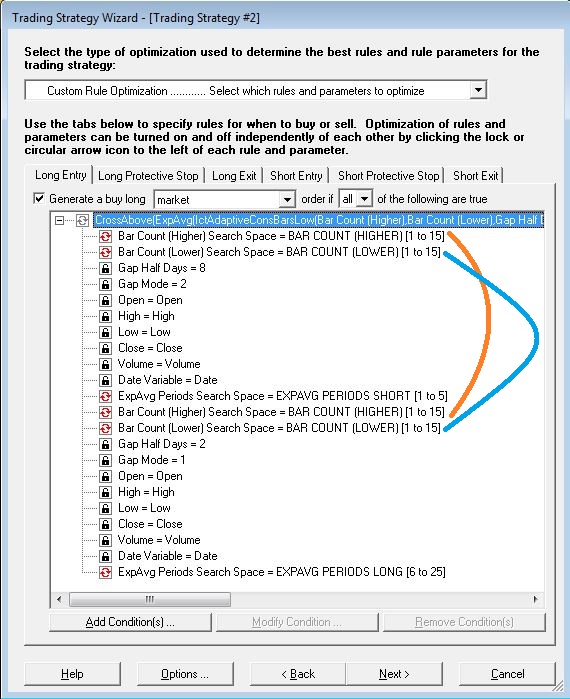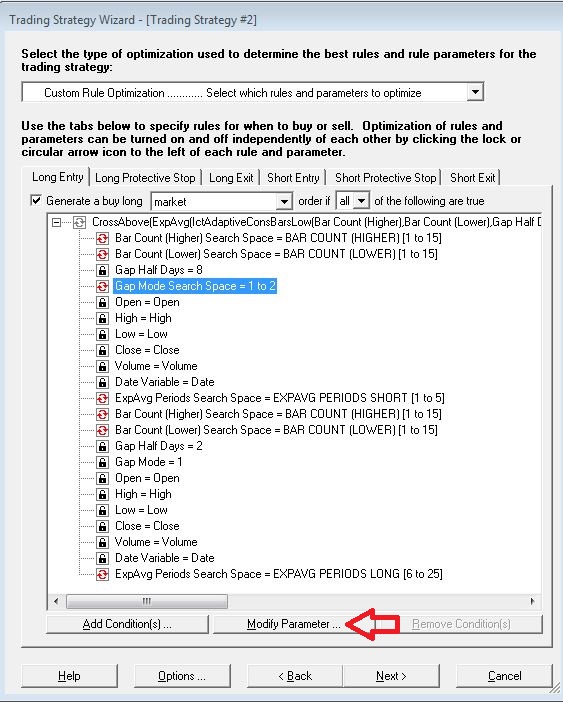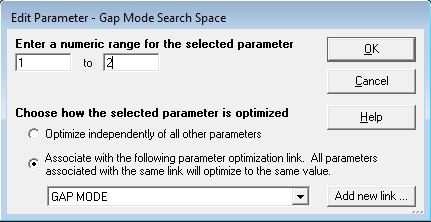The ranges for the Higher and Lower bar counts were linked to prevent optimization from trying to combine a different number of bars in the short and long exponential moving averages. Failing to link the parameters could mean that crossover would never occur if the short period moving average was built with a consolidation of 5 higher bars while the long period moving average was built with a consolidation of 3 higher bars. You also have to link the Bar Count (Lower) parameters for the same reason.

If you're using multiple Adaptive Consolidated Bars in the same trading rule It's important to link the Bar Count (Higher)
optimization range to all other instances of the same rule. The same is true for the Bar Count (Lower) range.
Linking does not mean that you lose the power of Adaptive Consolidated Bars where bars based on rising prices can consolidate x number of bars and bars based on falling prices can consolidate y number of bars. It does mean that all Bar Count (Higher) parameters must be linked and all Bar Count (Lower) parameters must be linked.
How to Link Parameters
To link indicator parameters, go to the Long Entry tab in the Trading Strategy wizard and select the indicator parameter you want to link. Click on the parameter and select modify.

Click on the plus sign beside the trading rule that includes the parameter you want to link. Select the parameter
from the list and then click on "Modify Parameter."
Note: The optimization linking described in this topic may or may not be visible depending upon the currently selected Wizard Interface Options. Press the Options button on the main wizard page to change the Wizard Interface Options.

To link parameters, choose the option to "Associate with the following parameter optimization link.
Click on the "Associate" button and then click on Add new link. You can either accept the name that is listed or assign any name you wish to the optimization link name (for example X, Y, LINK1, LINK2, CROSSOVERLINK1, MOVAVGLINK2, etc…). Note that the parameter will not be linked to any other parameter until you associate other parameters with this newly created link. To avoid having the optimization range change when existing optimization links are already listed in the drop down list, you should press the Add new link button before selecting Associate with parameter optimization. Next enter the optimization range that fits your parameter.
When an optimization link has been associated with a parameter, the parameter will be displayed in the main wizard with the optimization link name followed by the range for that link r in brackets (for example "LINK1 [1 to 10]").